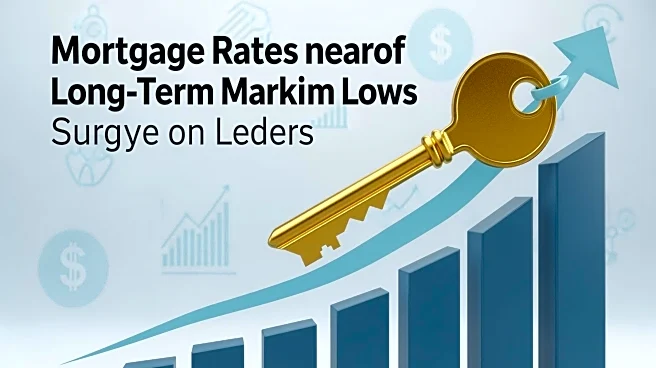What's Happening?
Mortgage rates are approaching long-term lows, with conventional 30-year fixed rates moving from the 6.3% range towards the 6.1% range. This shift is attributed to a significant intraday surge in the bond
market, prompting many mortgage lenders to reissue lower rates. The movement in rates is occurring despite the absence of major economic events or data releases. The current rate environment is characterized by a 'slippery slope' behavior, where rates tend to drop more quickly as they approach certain thresholds. The recent improvement in rates has been surprising, raising questions about whether this trend will continue or if a bounce is imminent.
Why It's Important?
The decline in mortgage rates is crucial for the housing market, as lower rates can increase affordability and encourage more buyers to enter the market. This trend may provide relief to homebuyers facing high home prices and economic uncertainty. The bond market's influence on mortgage rates highlights the interconnectedness of financial markets and the impact of investor sentiment on lending conditions. Continued rate reductions could stimulate the housing sector, contributing to broader economic growth.
What's Next?
The future direction of mortgage rates remains uncertain, with potential fluctuations depending on bond market movements and broader economic conditions. Stakeholders, including lenders and policymakers, will need to monitor these trends closely to anticipate changes in the housing market. Efforts to stabilize rates and address affordability issues may be necessary to support sustained growth in the real estate sector.











